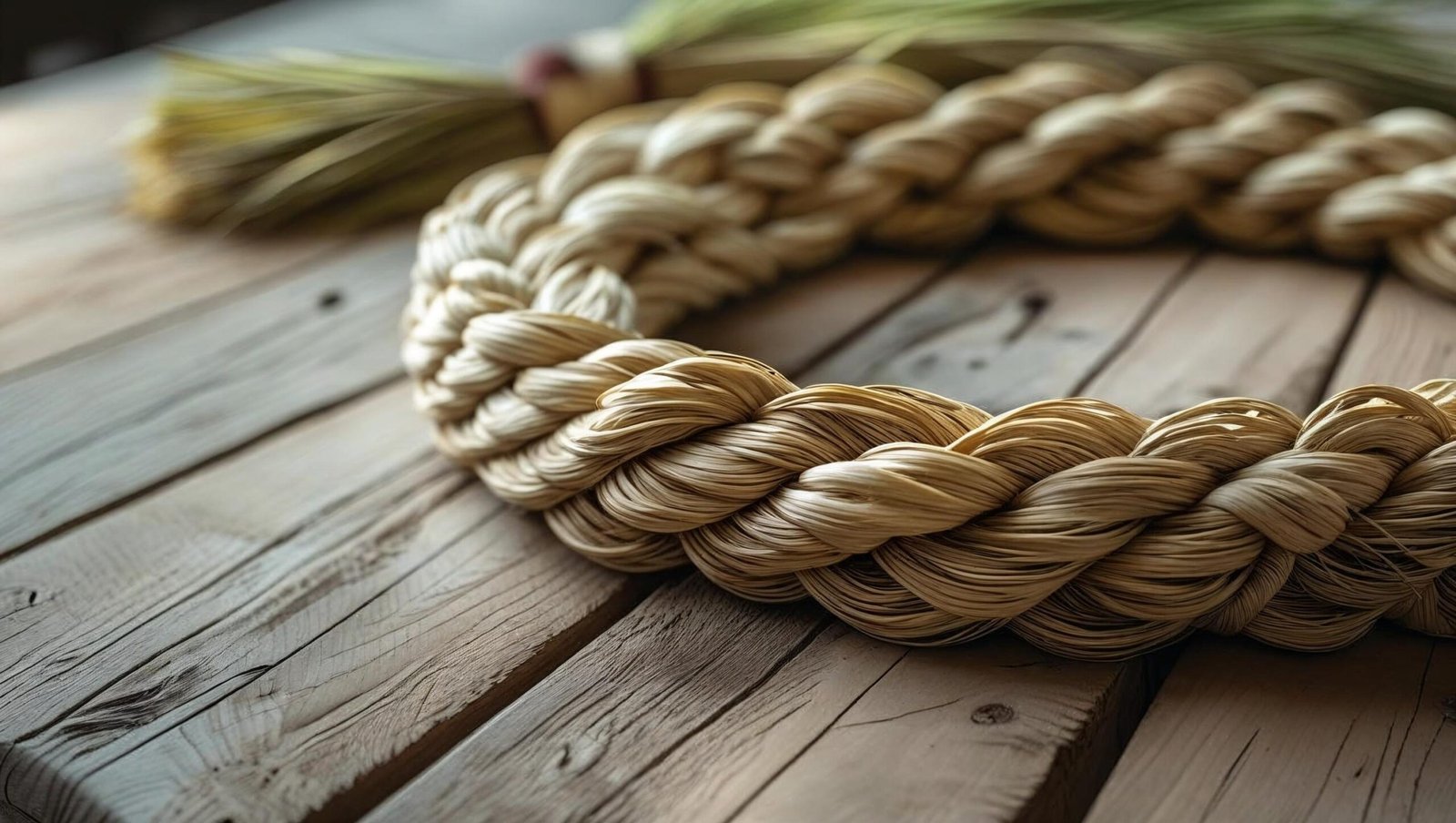Introduction
The braiding sweetgrass summary is not just an outline of Robin Wall Kimmerer’s celebrated book, but also a journey into the profound wisdom that blends scientific knowledge with Indigenous traditions. Kimmerer, a botanist and member of the Citizen Potawatomi Nation, has crafted a narrative that bridges ecological science with cultural heritage, gratitude, and storytelling.
This summary invites readers to pause, reflect, and truly acknowledge the gifts of the Earth. While most books on ecology and sustainability rely solely on data, Robin Wall Kimmerer takes a different approach. She uses stories, Indigenous teachings, and her personal reflections to teach us how to live harmoniously with nature.
Through this braiding sweetgrass summary, we will explore the essential lessons from the book, the themes that resonate deeply with humanity, and how they can inspire us in our daily lives.

1. The Central Theme of Braiding Sweetgrass
At its core, the braiding sweetgrass summary reflects the intertwining of three knowledge systems: scientific inquiry, Indigenous wisdom, and personal narrative. Kimmerer demonstrates that science is not at odds with spirituality but can instead complement it. Just as three strands of sweetgrass are braided together to form something stronger, so too can these perspectives weave a sustainable worldview.
This theme is not just poetic; it is transformative. It asks us to reconsider how we engage with the Earth. Instead of seeing nature as a resource to exploit, Kimmerer encourages us to view it as a generous relative offering gifts.
2. The Gift Economy of Nature
One of the most striking lessons in the braiding sweetgrass summary is the concept of the gift economy. Unlike the capitalist model of endless consumption, nature gives freely without expecting monetary payment. The air we breathe, the water we drink, and the food we eat are gifts.
Kimmerer insists that with gifts come responsibilities. Gratitude is the proper response, and stewardship is the moral duty. This perspective reshapes how we measure wealth—not in currency but in our ability to sustain reciprocity with the natural world.
3. Gratitude as a Daily Practice
The braiding sweetgrass summary repeatedly highlights gratitude as a transformative act. Gratitude, Kimmerer argues, is not passive. It is an active acknowledgment of the Earth’s generosity. In many Indigenous traditions, ceremonies of thanksgiving precede harvests, hunts, and gatherings.
When we practice gratitude daily, we shift from a mindset of scarcity to one of abundance. This lesson is particularly relevant in a world consumed by consumerism and competition. Gratitude roots us in awareness and humility.
4. Learning from Plants
Kimmerer reminds us in the braiding sweetgrass summary that plants are not just background scenery; they are teachers. Each plant has a story. Sweetgrass teaches generosity and healing. The three sisters—corn, beans, and squash—teach cooperation.
Plants embody patience, resilience, and balance. For example, beans fix nitrogen, corn provides structure, and squash shades the soil—together they thrive. This partnership demonstrates the value of diversity and community, a lesson modern society desperately needs.
5. Science and Spirituality in Harmony
The braiding sweetgrass summary beautifully illustrates that science and spirituality are not enemies but partners. As a trained botanist, Kimmerer uses empirical evidence to study the natural world. Yet she also honors Indigenous stories and ceremonies that carry truths beyond scientific measurement.
This dual perspective enriches her narrative. It demonstrates that wisdom is not confined to laboratories but also found in rituals, myths, and oral traditions. Together, they provide a more holistic understanding of life.

6. Healing the Relationship with Land
In the braiding sweetgrass summary, healing is a recurring motif. Colonialism, industrialization, and environmental degradation have severed humanity’s bond with the land. But healing is possible when we approach the Earth with humility and responsibility.
Kimmerer speaks of restoration not only in ecological terms but also in emotional and cultural dimensions. By planting, preserving, and honoring, we participate in healing the wounds of the Earth and ourselves.
7. The Language of the Earth
Another profound lesson in the braiding sweetgrass summary is the significance of language. Kimmerer laments that English often treats nature as an object, using terms like “it” instead of personhood. In contrast, many Indigenous languages regard plants and animals as subjects with agency.
This shift in language changes perception. If we call a tree “it,” we may feel detached. If we call a tree “who,” we acknowledge relationship and respect. Language shapes our ethics, and thus learning the language of the Earth restores reverence.
8. Reciprocity as an Ethical Imperative
The braiding sweetgrass summary repeatedly reminds us of reciprocity. Nature gives, and we must give back. Reciprocity can be simple—planting trees, reducing waste, caring for waters, or even offering prayers of gratitude.
This ethic of reciprocity challenges the extractive mindset of modern economies. Instead of endless consumption, it promotes balance. We do not take without giving, nor do we receive without gratitude.
9. Lessons for Modern Sustainability
Kimmerer’s work is not just philosophical; it has practical implications. The braiding sweetgrass summary offers sustainable lessons for agriculture, environmental policy, and everyday living. For example, regenerative farming echoes Indigenous practices of respecting soil health.
Urban communities can learn from the “three sisters” model, applying principles of cooperation to both food systems and human relationships. Sustainability, according to Kimmerer, is not a technical challenge but a moral and spiritual responsibility.
10. The Role of Storytelling
The braiding sweetgrass summary also emphasizes storytelling as a vessel of wisdom. Scientific data may inform, but stories inspire action. Indigenous tales about plants, animals, and landscapes are not mere folklore—they are ethical guides.
Through storytelling, Kimmerer bridges generations. She weaves together the voices of ancestors, her own experiences, and the hopes of future descendants. Stories remind us who we are and where we belong.
11. Transformative Power of Indigenous Wisdom
Finally, the braiding sweetgrass summary reveals the transformative power of Indigenous wisdom. These teachings do not merely romanticize nature; they offer real solutions to ecological crises. They call for humility, reciprocity, and reverence—principles absent in exploitative systems.
By listening to Indigenous voices, modern society can find pathways to healing and sustainability. Kimmerer does not present these teachings as relics of the past but as vital wisdom for the present and future.

The Deeper Symbolism of Braiding
When reading the braiding sweetgrass summary, one cannot overlook the metaphor of braiding itself. Sweetgrass is often gathered in three strands and woven into a single braid, symbolizing unity and strength. Robin Wall Kimmerer chose this as the central metaphor of her book for a reason.
Each strand represents something vital: scientific knowledge, Indigenous wisdom, and personal experience. Alone, each strand has value, but together, they form something unbreakable. This lesson teaches us that integration, not division, is the path forward. Our society often separates disciplines—science from spirituality, tradition from modernity—but this division weakens us. By braiding them together, we create resilience.
This metaphor also applies to human life. Each person has different roles—family, career, community—and balancing them requires weaving, not isolating. The braiding sweetgrass summary therefore transcends environmental discourse and enters the realm of human psychology and ethics.
The Importance of Ceremony and Ritual
Ceremony plays a central role in Indigenous traditions. In the braiding sweetgrass summary, Kimmerer shares how rituals like offering tobacco before harvesting plants or giving thanks before meals connect people with the land. These rituals remind us that nothing should be taken for granted.
Modern life often strips away ceremony. Eating is hurried, seasons are ignored, and gratitude is forgotten. By reintroducing ritual—even in small ways like pausing before a meal to reflect—we restore a sacred connection with the everyday.
The power of ceremony is not about religion but about mindfulness. It creates a pause, a moment of acknowledgment, and a reminder of interdependence. For readers of the braiding sweetgrass summary, this lesson encourages us to embed gratitude in our daily habits, strengthening our bond with nature and community.
The Colonial Disruption of Relationships
Kimmerer does not shy away from addressing painful history. The braiding sweetgrass summary confronts the disruption caused by colonization, which severed Indigenous peoples from their ancestral lands and practices. This disruption also disconnected modern society from a respectful relationship with the Earth.
By acknowledging these historical wounds, we open the path to healing. Healing does not come from ignoring the past but from recognizing it and choosing a better way forward. This includes respecting Indigenous sovereignty, protecting sacred lands, and learning from traditional ecological knowledge.
The braiding sweetgrass summary is therefore not just a book of lessons but also a call for justice. Ecological restoration must go hand in hand with cultural restoration.
Applying the Lessons to Everyday Life
One reason the braiding sweetgrass summary resonates with readers is that its lessons are practical. Gratitude can be practiced daily by writing thank-you notes, acknowledging the source of our food, or even keeping a gratitude journal. Reciprocity can be enacted by composting, volunteering for local clean-up efforts, or planting trees in one’s community.
Consider how you shop. Instead of seeing every purchase as a transaction, think of it as a relationship. Supporting local farmers or ethical companies is a form of reciprocity. Reducing waste and reusing materials honors the gift economy of nature.
Even in urban environments, lessons from the braiding sweetgrass summary apply. Rooftop gardens, community composting, and sustainable transportation echo Kimmerer’s call for balance. In every action, we can ask: How do I give back to the Earth that sustains me?
Storytelling as a Tool for Change
The braiding sweetgrass summary emphasizes the transformative nature of storytelling. Data may explain climate change, but stories move hearts to act. Indigenous narratives remind us that the Earth is not a resource but a relative.
For instance, the Potawatomi story of the Skywoman falling from the sky and being helped by animals to create the Earth reminds us of cooperation and reciprocity. This tale, though ancient, contains lessons still relevant today.
Modern movements for sustainability could learn from this. Instead of overwhelming audiences with statistics alone, weaving stories of hope, community, and resilience can inspire deeper engagement. The braiding sweetgrass summary demonstrates that storytelling is not entertainment—it is a strategy for survival.

Sweetgrass as Medicine
Sweetgrass itself carries a symbolic and medicinal role. In many Indigenous cultures, it is burned as incense, braided into offerings, or used in ceremonies for purification. In the braiding sweetgrass summary, sweetgrass becomes more than a plant; it is a teacher of generosity and healing.
Sweetgrass gives freely—it grows abundantly, spreads easily, and offers fragrance even after being dried. This teaches us that generosity leaves a legacy that continues beyond one’s own life. As Kimmerer writes, the Earth’s gifts are not diminished when shared; they grow stronger.
Applying this lesson in our own lives, we learn that generosity is not loss but abundance. Sharing time, resources, or knowledge enriches communities rather than impoverishes individuals.
Restoring Hope Amid Crisis
One of the most uplifting aspects of the braiding sweetgrass summary is its message of hope. Environmental news often focuses on catastrophe: melting ice caps, deforestation, species extinction. While these are real and urgent issues, despair can paralyze action.
Kimmerer counters despair with hope rooted in gratitude and reciprocity. By reminding us that healing is possible, she empowers readers to act. Planting a single tree, teaching a child about nature, or protecting a local river may seem small, but collectively, such actions create transformation.
The braiding sweetgrass summary encourages us to shift from fear-based environmentalism to love-based stewardship. Instead of asking what we fear losing, we ask what we love enough to protect.
Intergenerational Responsibility
A recurring theme in the braiding sweetgrass summary is responsibility to future generations. Many Indigenous teachings remind us to consider the impact of our actions on the “seventh generation” ahead. This perspective contrasts sharply with modern systems driven by quarterly profits and immediate gratification.
Imagine if every policy decision, business choice, or personal habit were evaluated not only by its immediate effect but also by its impact 100 years from now. This ethic of foresight could revolutionize environmental and social systems.
By planting trees we may never sit under, or by preserving water sources we may never drink from, we act as ancestors of integrity. The braiding sweetgrass summary thus reframes sustainability as legacy.
Personal Transformation through Reflection
Reading the braiding sweetgrass summary is not just an intellectual exercise; it is a deeply personal one. Many readers report feeling a profound shift in how they view the natural world. Instead of seeing trees as timber or rivers as resources, they begin to see them as kin.
This shift often sparks personal changes—choosing to spend more time in nature, simplifying lifestyles, or advocating for environmental protection. In this way, the book becomes not just a text but a mirror, reflecting our relationship with the Earth and asking: How will you live differently now that you know?
The Urgency of Listening
The final lesson from the braiding sweetgrass summary is urgency. The Earth is speaking through climate disruptions, species loss, and collapsing ecosystems. The question is: are we listening?
Kimmerer’s work teaches that listening requires humility. It means valuing Indigenous voices, observing plants and animals, and allowing silence to teach. Listening is an act of respect, a first step toward healing.
The urgency is real, but despair is not the answer. Listening with humility and responding with gratitude and reciprocity can guide us toward a more harmonious future.

FAQs on Braiding Sweetgrass Summary
Q1. What is the central message of the braiding sweetgrass summary?
The central message is the interconnectedness of science, Indigenous wisdom, and personal storytelling to promote gratitude, reciprocity, and sustainable living.
Q2. Why is sweetgrass important in the book?
Sweetgrass symbolizes healing, generosity, and the sacredness of gifts. It is often braided as a ceremonial act representing unity and strength.
Q3. How does the braiding sweetgrass summary relate to modern sustainability?
It provides lessons on reciprocity, gratitude, and ecological balance that can guide sustainable agriculture, conservation, and community building.
Q4. Is the book purely spiritual or scientific?
It is both. The author blends rigorous scientific knowledge with Indigenous spirituality, showing they can enrich one another.
Q5. Why is gratitude emphasized so strongly?
Gratitude transforms how we perceive abundance, shifting from consumerism toward respect for nature’s gifts.
Conclusion
The braiding sweetgrass summary teaches us lessons that go beyond the pages of Robin Wall Kimmerer’s book. It is not merely a collection of stories but a call to live differently. By blending science with Indigenous wisdom, it challenges modern society to reimagine its relationship with the Earth.
Gratitude, reciprocity, storytelling, and healing—these are not abstract ideals but practical tools for building a sustainable world. If we embrace them, we can restore our broken relationship with nature.
At shubhanshuinsights.com, I believe that books like Braiding Sweetgrass do not just inform but transform. They awaken us to the beauty of the Earth and our responsibility to honor it.
This braiding sweetgrass summary is a reminder that the future is not about domination but about harmony. And harmony begins with gratitude.
👉 Powerful Comment Section Line for Readers:
What lesson from the braiding sweetgrass summary resonates most with you—gratitude, reciprocity, or storytelling? Share your thoughts below and let us continue this conversation on living harmoniously with nature.